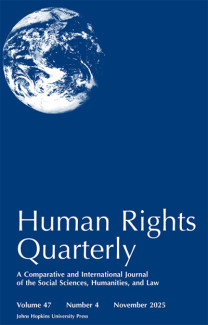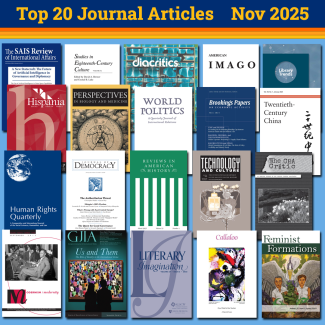
Johns Hopkins UniversityEst. 1876
America’s First Research University
Changing World of Children's Literature

Four times a year, Children's Literature Association Quarterly publishes first-rate scholarship in children's literature studies. Two recent issues have taken on questions of genre in children's and young adult literature. Editor Claudia Nelson, Professor of English at Texas A&M University, joined us for a Q&A on these issues as well as what the journal has in store for upcoming issues.
Two straight issues of the journal have focused on questions of genre. What makes this the topic to discuss at this time?

Genre makes a great lens through which to consider children's literature because all texts belong to some genre, which gives readers a starting point from which to understand them. Karen Chandler and Sara Austin's recent guest-edited issue on genre in African American children's literature offered fascinating articles, I thought, and got me thinking about how genre helps to structure texts. So when I was writing the introduction to issue 42.1, it occurred to me that an interesting facet of the issue was that each article focused on a different kind of text, produced over a wide timespan and in a wide variety of places. Children's literature is an amazingly varied form, which is one thing that makes it so rewarding to study. It keeps changing over time.
What can people learn from looking at the collision of genres in children's literature?
Some film theorists talk about "adjacent genres"--genres that have significant qualities in common, such as film noir and the female gothic--and how the traits of one genre may bleed into the next, influencing content. Along similar lines, I want to suggest that when genres collide in children's literature, the results can be very rich. The Harry Potter series, to take one obvious example, belongs to the genres of school story, fantasy about the triumph of good over evil, coming-of-age narrative, orphan story--the list goes on. And each of these genres comes with its own conventions, which the series takes up but in a way that's influenced by the convergence of all the other genres in these texts. Conversely, in the case of a journal issue in which the various articles look at different texts belonging to different genres, we may start to see similarities and correlations that we wouldn't have noticed otherwise. Maybe all genres might be seen as adjacent to one another if we just look at them from the right angle.
One of the essays focuses on The Outsiders, one of the best-known young adult books ever. How important is it for the journal to examine works like that alongside essays on 19th-Century school stories and Ghanaian dramas?
I think it's very important to look both at familiar texts and at unfamiliar ones--with the aim being to gain new ways of approaching all this material, well known and little known alike. It's always exciting to learn something I didn't already know, whether because an article is uncovering a neglected text or because it's offering a new way to read a text I might have thought couldn't hold any more surprises for me. As an editor, I'm constantly looking for articles that I think might surprise other readers, too. Nineteenth-century school stories about teacher/student romances--how many of our readers knew that this genre existed? S. E. Hinton's greasers as a boy band without the music--what a great insight!
What other topics will the journal explore in 2017?
We have quite a few great articles in production, on a range of topics that I hope will please our readers. Issue 42.2 has articles on a satirical British alphabet book from 1899 that was as much for adults as for children; the children's page from the Chicago Defender, a major African American newspaper of the early twentieth century; two historical novels by the Soviet children's author Aleksandr Volkov; and how assorted Oz film adaptations both keep and change certain elements of the 1939 MGM musical. The issue also contains a Forum section--something we haven't included for a while--on "New Issues, New Responses in Young Adult Literature," with three related contributions all discussing recent developments in that field. Issue 42.3 contains a mixture of articles on classics and articles on recent works, with young adult literature again being an object of interest. And issue 42.4 is a special issue on Animation, guest-edited by Joseph Michael Sommers--definitely an issue not to be missed.


